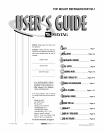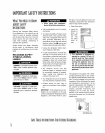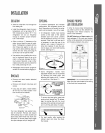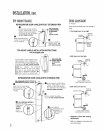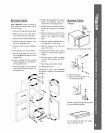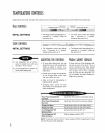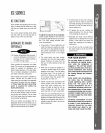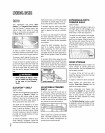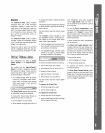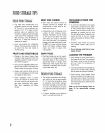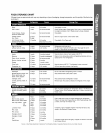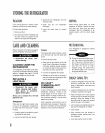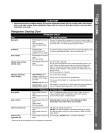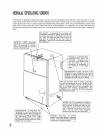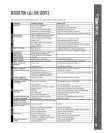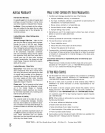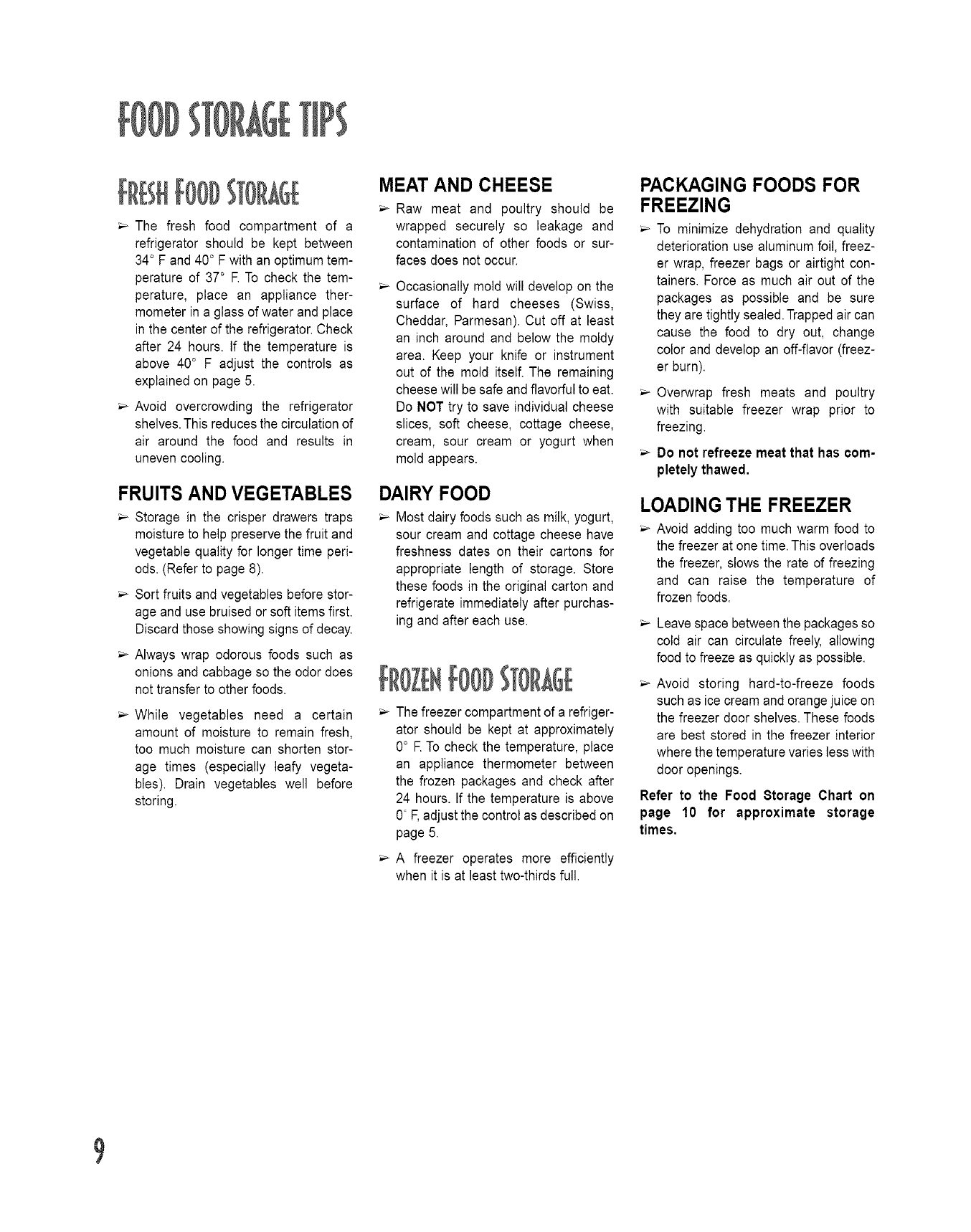
Thefreshfood compartmentof a
refrigeratorshouldbe keptbetween
34°Fand40°Fwithanoptimumtem-
peratureof 37° ETocheckthetem-
perature,placean appliancether-
mometerinaglassofwaterandplace
inthecenteroftherefrigerator.Check
after24hours.If thetemperatureis
above40° F adjustthecontrolsas
explainedonpage5.
Avoidovercrowdingthe refrigerator
shelves.Thisreducesthecirculationof
air aroundthefoodandresultsin
unevencooling.
FRUITS AND VEGETABLES
Storage in the crisper drawers traps
moisture to help preserve the fruit and
vegetable quality for longer time peri-
ods. (Refer to page 8).
Sort fruits and vegetables before stor-
age and use bruised or soft itemsfirst.
Discard those showing signs of decay.
Always wrap odorous foods such as
onions and cabbage so the odor does
not transfer to other foods.
While vegetables need a certain
amount of moisture to remain fresh,
too much moisture can shorten stor-
age times (especially leafy vegeta-
bles). Drain vegetables well before
storing.
MEAT AND CHEESE
Raw meat and poultry should be
wrapped securely so leakage and
contamination of other foods or sur-
faces does not occur.
Occasionally mold will develop on the
surface of hard cheeses (Swiss,
Cheddar, Parmesan). Cut off at least
an inch around and below the moldy
area. Keep your knife or instrument
out of the mold itself. The remaining
cheese will be safe and flavorfulto eat.
Do NOT try to save individual cheese
slices, soft cheese, cottage cheese,
cream, sour cream or yogurt when
mold appears.
DAIRY FOOD
Most dairy foods such as milk, yogurt,
sour cream and cottage cheese have
freshness dates on their cartons for
appropriate length of storage. Store
these foods in the original carton and
refrigerate immediately after purchas-
ing and after each use.
Thefreezer compartment of a refriger-
ator should be kept at approximately
0° E To check the temperature, place
an appliance thermometer between
the frozen packages and check after
24 hours. If the temperature is above
0 F,adjust the control asdescribed on
page 5.
A freezer operates more efficiently
when it is at least two-thirds full.
PACKAGING FOODS FOR
FREEZING
To minimize dehydration and quality
deterioration use aluminum foil, freez-
er wrap, freezer bags or airtight con-
tainers. Force as much air out of the
packages as possible and be sure
they are tightly sealed.Trappedair can
cause the food to dry out, change
color and develop an off-flavor (freez-
er burn).
Overwrap fresh meats and poultry
with suitable freezer wrap prior to
freezing.
Do not refreeze meat that has com-
pletely thawed.
LOADING THE FREEZER
Avoid adding too much warm food to
the freezer at one time.This overloads
the freezer, slows the rate of freezing
and can raise the temperature of
frozen foods.
Leavespace between the packagesso
cold air can circulate freely, allowing
food tofreeze as quickly as possible.
Avoid storing hard-to-freeze foods
such as ice cream and orangejuice on
the freezer door shelves. These foods
are best stored in the freezer interior
where the temperature varies less with
door openings.
Refer to the Food Storage Chart on
page 10 for approximate storage
times.



